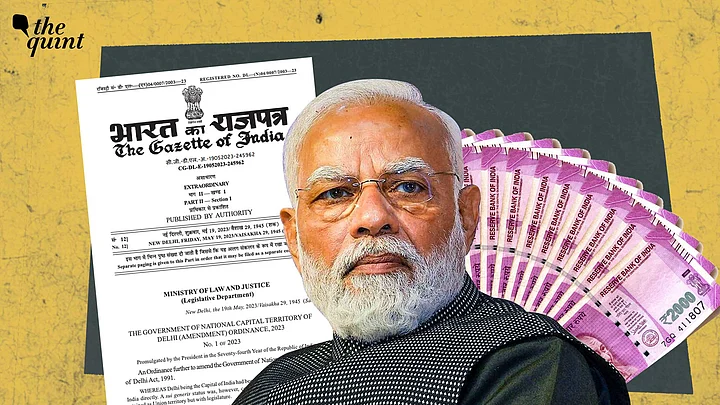On 19 May, the Narendra Modi-led central government made two major announcements:
It introduced an ordinance giving the lieutenant governor of Delhi the final say in the posting and transfer of officials in Delhi. This, in effect, went against the Supreme Court order that gave these powers to the elected government of Delhi.
The Reserve Bank of India announced the withdrawal of the Rs 2,000 currency note that it had introduced as part of the 2016 demonetisation decision.
Both these measures are from completely different domains and there is a lot to unpack on each of them, from a policy point of view. But politically, they are both consistent with Prime Minister Narendra Modi's style of leadership. Let's take a look at the four political angles to these moves.
1. Taking the Opposition by Surprise
The Opposition had recently won two important victories. The first was the Supreme Court judgment on 11 May that said that the "real power of administration in Delhi lay with the elected arm of the state." This was a huge vindication for the Aam Aadmi Party government in Delhi.
The second, and much bigger win, was the victory of the Congress in the Karnataka Assembly elections.
Both the measures taken on 19 May would come as a surprise to the Opposition. It's a clear message to the Opposition parties that they can't afford to rest on their laurels for long, and that the BJP would always have a trick or two up its sleeve to change the equations.
The AAP government, for instance, has been in a constant state of siege for some time now. Two of its senior leaders – Manish Sisodia and Satyendar Jain – are in jail in connection with the alleged liquor scam. Control over the administration in Delhi has been a constant bone of contention.
It had barely begun asserting control after the 11 May verdict. Now, the ordinance nullifies its gains for the time being, though the Delhi government is likely to go for an appeal.
The withdrawal of the Rs 2,000 note could also become a challenge for Opposition parties. It is no secret that parties and individual leaders do rely a great deal on cash payments for political activities.
The withdrawal of the Rs 2,000 note could particularly make matters tricky for smaller parties and individual leaders. Whether or not the government shared information about this move with ruling party functionaries and leaders is anybody's guess.
2. Supremacy of the Central Government
The Government of National Capital Territory of Delhi (Amendment) Ordinance 2023 reads, "The national capital belongs to the entire nation and the entire nation is vitally interested in the governance of the national capital. It is in the larger national interest that the people of entire country have some role in the administration of the national capital through the democratically elected Central Government."
The rationale given for this is actually very similar to the language used by the Modi government to do away with Article 370 for Jammu and Kashmir. It gave primacy to the 'will of the nation' as represented by the central government, over the 'will of the people of Jammu and Kashmir.' Ironically, the AAP had supported the government's move on Jammu and Kashmir.
The move to withdraw the Rs 2,000 note, too, is a message to the people, especially traders, that the central government has enough power to take measures that could significantly affect their daily lives.
3. Arbitrariness
Both these moves are aimed at asserting the power of the Modi government. And at the root of this assertion, lies a degree of arbitrariness.
Regarding the Rs 2,000 note, neither the timing nor the purpose of the move is clear. All that the RBI circular says is that the note was introduced to deal with currency requirements after the 2016 move and that it had stopped being printed since 2018-19. Why it is being withdrawn now, remains unclear.
The GNCTD Ordinance is an even more acute case of arbitrariness. As it basically overturns the 11 May Supreme Court judgment, it sends the signal that even apex court decisions are no guarantees for parties on the opposing side of the Centre, and that such decisions can be overturned through ordinance if the government so wills. Of course, the Modi government isn't the first regime to do this and won't be the last.
4. Taking Control of the Narrative
The Karnataka election results had come as a boost to anti-BJP forces. The focus over the past few days had been on the Congress' strategy paying off and the key role played by the party's state and national leadership in the victory, besides the BJP's failures.
Both these moves came just on the eve of the swearing-in ceremony for the new government in Karnataka. The tussle around them is likely to dominate the discourse for the next week or so.
The Karnataka election campaign was one of the few rare occasions in the past nine years, in which the BJP was essentially reacting and the Congress was setting the narrative.
Through its moves on Delhi and the Rs 2,000 note withdrawal, the BJP wants to get back to setting the narrative.
